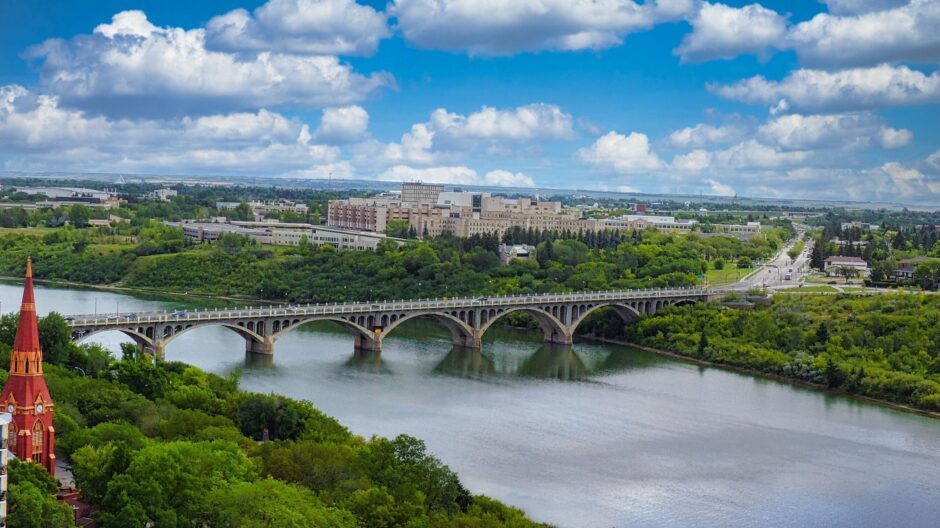A Brief History of Saskatoon
Saskatoon is a city located in the Canadian province of Saskatchewan. Founded in 1882, Saskatoon has a rich history that has seen the city grow from a small trading post into a vibrant and thriving urban center. In this essay, we will explore the history of Saskatoon, from its earliest beginnings to the present day.
Saskatoon was originally inhabited by various indigenous groups, including the Cree, the Dakota, and the Nakota. These groups used the land around the South Saskatchewan River for hunting and fishing, and their presence in the area dates back thousands of years. The name “Saskatoon” comes from the Cree word “misâskwatômina,” which means “berry of the tree of many branches.” The berry referred to is the Saskatoon berry, which grows abundantly in the area.
In the late 19th century, the Canadian Pacific Railway was expanding its network westward, and the government of Canada was keen to encourage settlement in the newly-formed province of Saskatchewan. To this end, the government established a series of land grants, which allowed settlers to claim parcels of land and establish homesteads. One of these land grants was located at the site of present-day Saskatoon, and it was here that the city began to take shape.
The first non-indigenous settlers arrived in the Saskatoon area in the early 1880s. These early settlers were primarily traders and merchants who established a small settlement near the river. The settlement grew slowly at first, but by the turn of the century, Saskatoon had become a thriving center of commerce and trade.
One of the factors that contributed to Saskatoon’s growth was the construction of the University of Saskatchewan in 1907. The university brought a new influx of students and faculty to the city, and it helped to establish Saskatoon as an educational and cultural center. In addition to the university, Saskatoon was also home to several other important institutions, including hospitals, churches, and government offices.
Saskatoon’s economy was based primarily on agriculture in the early days, with wheat, oats, and barley being the main crops. However, the city also had a thriving lumber industry, as well as a growing manufacturing sector. By the 1920s, Saskatoon was the largest city in Saskatchewan, with a population of over 25,000.
The Great Depression of the 1930s had a significant impact on Saskatoon, as it did on many other cities around the world. The city’s economy suffered, and many people struggled to make ends meet. However, Saskatoon rebounded in the post-war years, as the demand for wheat and other agricultural products increased. The city’s population grew rapidly during this time, and new neighborhoods were established on the outskirts of the city.
Throughout the latter half of the 20th century, Saskatoon continued to grow and prosper. The city became a hub for the mining and energy industries, and it also developed a strong technology sector. In recent years, Saskatoon has become known for its vibrant arts and culture scene, as well as its many parks and green spaces.
Today, Saskatoon is a thriving and dynamic city with a rich history and a bright future. Its economy is diverse and growing, and it is home to a diverse and multicultural population. Saskatoon’s heritage is celebrated through its many museums, festivals, and cultural events, and the city remains a vital center of commerce, education, and culture in the heart of Canada’s prairies.


